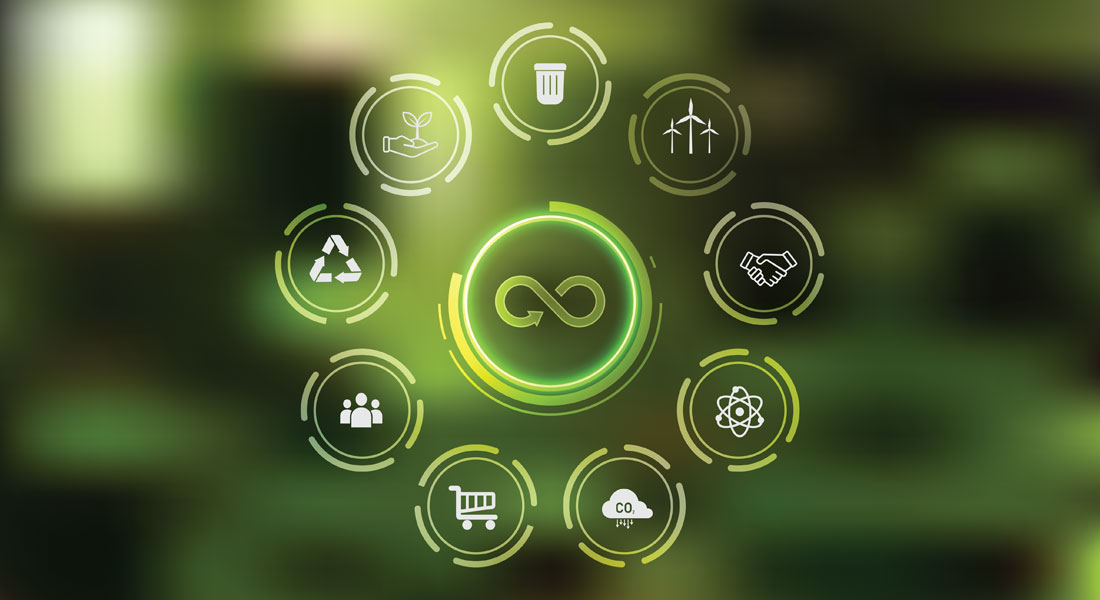How to Design Effective Sustainability Training Programs?
Sustainability training is not just the buzzword. It has gained significant importance for the impact it has on the overall way of life. To help your employees develop practical skills and knowledge, designing effective sustainability training programs is crucial. Read on to know how you can do so.

It is no hidden secret that designing effective courses can get difficult! And when the stakes are high, there’s a very little room for making mistakes. Designing sustainability training programs is one such thing. In today’s fast-paced, quickly-changing corporate and social world, the time for action is now! Therefore, you can’t take any chances when it comes to designing your sustainability training programs and ensuring their effectiveness and impact.
Designing Effective Sustainability Training Programs is Easy!
Here’s how you need to proceed:
- 彻底理解这个概念
- Conduct a needs assessment
- Define learning objectives clearly
- Keep the content relevant and interactive
- Provide opportunity for evaluation and feedback
So in this blog we’ll see how you can design effective sustainability training programs. This will enable you, your organization, and the employees to combine the efforts to promote an environment that is viable for sustainable development and growth.
How to Design Effective Sustainability Training Programs?
Understand the Concept Thoroughly
先做重要的事。设计一个有效的优秀人才g program, you need to have a good, clear understanding of what the topic is all about. With that said, you also need to pay attention to the purpose of designing the training programs along with an understanding of the target audience. You won’t be conducting training for a beginner and an expert in the same manner. Right?
→ Download Now: Instructional Design 101
So let’s know this in a little more detail so that you can design effective corporate sustainability training programs. Sustainability training in a simple sense is about equipping your learners with the knowledge, skills, and mindset to embrace sustainable practices. These practices can be relevant, both in their personal as well as professional lives.
You need to get it right that corporate sustainability training goes beyond simply understanding environmental issues. It encompasses the broader concept of creating a harmonious balance between environmental, social, and economic aspects. And when it comes to selecting your audience, they can vary from stakeholders to employees to company leaders. But make sure that your sustainability training is inclusive. This means that it reaches across all levels and departments to instill a collective commitment.
So, you need to design training courses that aim to empower participants to become proactive change agents and contribute positively to a more sustainable future. Check out the infographic below to know key components for effective sustainability training programs.

Conduct a Needs Assessment
第二个重要的步骤是进行需求评估ment. It is absolutely crucial in designing a successful sustainability training program. You need to prioritize and understand your organization’s sustainability goals and challenges. This will require you to closely collaborate with the key stakeholders such as the sustainability team, management, and employees. Collaboration is an important aspect as it helps you identify existing sustainability initiatives, areas that need improvement, organization’s long-term sustainability aspirations, etc.
With this knowledge at your disposal, you can easily tailor your sustainability training programs for maximum impact and efficiency.
Needs assessment isn’t just limited to goals and challenges alone. It is equally important for you to assess your employees’ current knowledge and awareness of sustainability. You can do so by circulating surveys, conducting interviews, organizing polls, etc. They will provide you with insights into their understanding of sustainability concepts, practices, or any obstacles they face in adopting sustainable behaviors.
This information is invaluable in designing targeted training content that effectively bridges knowledge gaps and meets learners where they are in their sustainability journey.
Define Learning Objectives Clearly
To design an effective sustainability training program, it is essential that you definelearning objectivesclearly. Curious to know why? Well, clear and measurable learning outcomes help you lay a strong foundation for your sustainability training program. In addition to that, it also enables you to outline and decide what participants will achieve after completing the training program.
The learning objectives for your training program may vary from improving understanding of sustainable business practices to promoting responsible consumption to fostering innovative thinking to address sustainability challenges. Make sure you design the training programs in such a manner that they allow your learners to accomplish the learning objectives along with being in line with the organization’s broader sustainability strategy.
That being stated, here’s a valuable tip. Keep your learning objectives realistic and practical. It would be easier for your learners to integrate them into their schedule and even track their progress which can be a huge motivator to do better.
Keep the Content Relevant and Interactive
After passing all the above mentioned steps successfully, it all boils down to designing and developing content. That’s right! And to develop a compelling, learner-centric content for your sustainability training program, you need to keep several things in mind. Let’s check them one by one.
The first one is to choose relevantsustainabilitytopics and themes. It is vital to ensure that your training content resonates with the learners and aligns with their roles within the organization. Check out the infographic below to get an idea about some of the relevant topics.

Such topics will enhance learner engagement and motivate them to apply their newfound knowledge into their daily lives. Along with selecting relevant topics, it is equally important to choose the right instructional design strategy for designing your training program. It can be an absolute game changer in the whole eLearning design and development process. You can leverage microlearning, scenario-based learning, gamification, storytelling, etc., to make learning fun and impactful. Check out the video below to know storytelling tips for effective corporate training.
Secondly, try incorporating real-world examples and case studies that bring sustainability concepts to life. This approach will make your training programs more relatable and inspiring. Try sharing success stories of organizations that implemented sustainable practices and its positive impact.
Lastly, to foster effective learning and make your sustainability training programs interactive, you must leverage multimedia elements and othereLearning interactivities. They will help boost learner engagement and attention as they offer a great opportunity to interact with the learning content. You can utilize multimedia elements such as videos, audio, infographics, animations, flashcards, etc. Along with that you can also integrate elements such as quizzes, group discussions, role-playing, hands-on activities, etc., to facilitate an overall immersive training experience.
When combined, these content development strategies contribute to a comprehensive and impactful sustainability training program that inspires participants to become champions of sustainability within their organization and beyond.
Provide Opportunity for Evaluation and Feedback
No training program, regardless of how well-thought and well-designed, is perfect. There is always some room for improvement. And to tap into this area to ensure better results, you must provide opportunities for evaluation and feedback in your sustainability training programs.
For evaluation, you can encompasseLearning assessmentssuch as quizzes, Multiple Choice Questions (MCQs), fill in the blanks, etc. These will help you garner learning analytics which can be used to identify the learning gaps and provide additional training and support accordingly. And for feedback purposes, you can use a post-training survey, smiley sheet, or other customized questionnaire. You can even leverage one-on-one interviews to understand learners’ perceptions of the training program, the content’s relevance, challenges during the learning process, etc.
Based on the data collected and analyzed, you can easily refine your sustainability training programs to achieve desirable, sustainable results.
Parting Thoughts!
For a balanced, thriving future, focusing on corporate sustainability training is essential! In order to do so, you need to provide sustainability training to your employees. With that said, to maximize the impact, it is equally important to design effective sustainability training programs. In this blog, we’ve seen 5 elements that are sure to help you out. Incorporate them into your training program design today and see amazing results for yourself! To get a better hold on the basics of instructional design, do check out our informative, handy guide given below.






